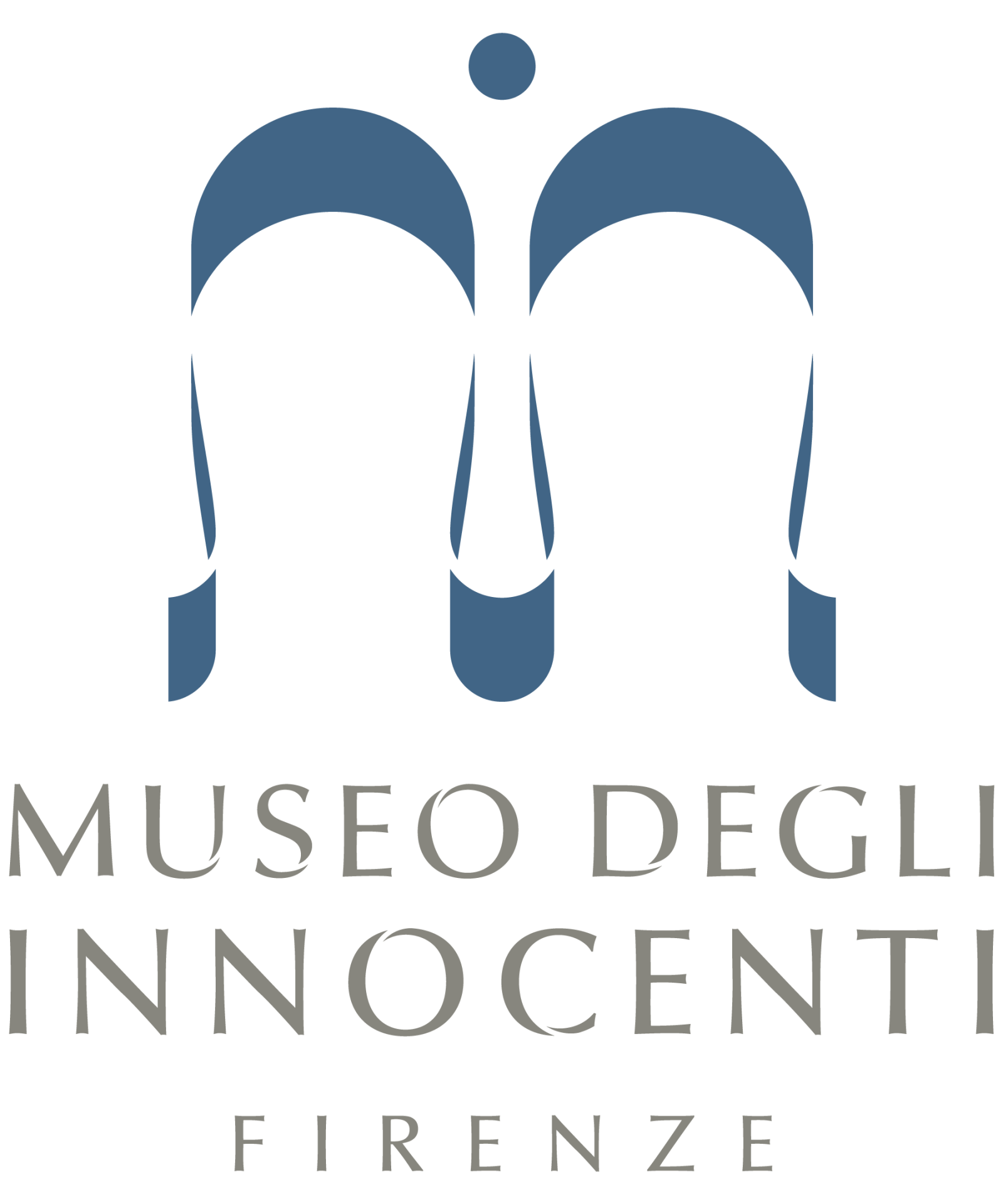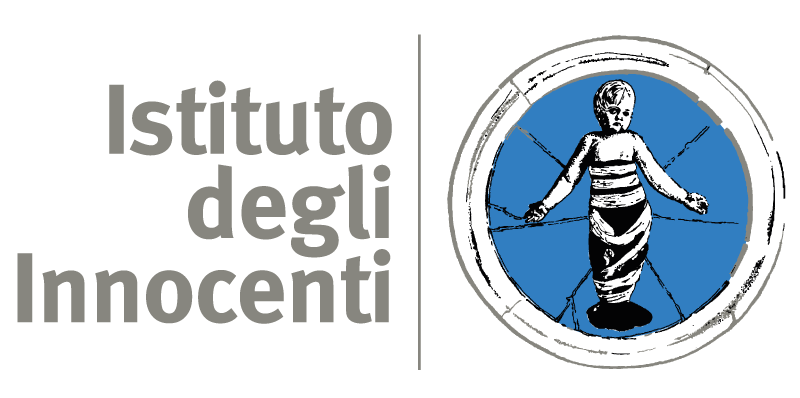Architecture
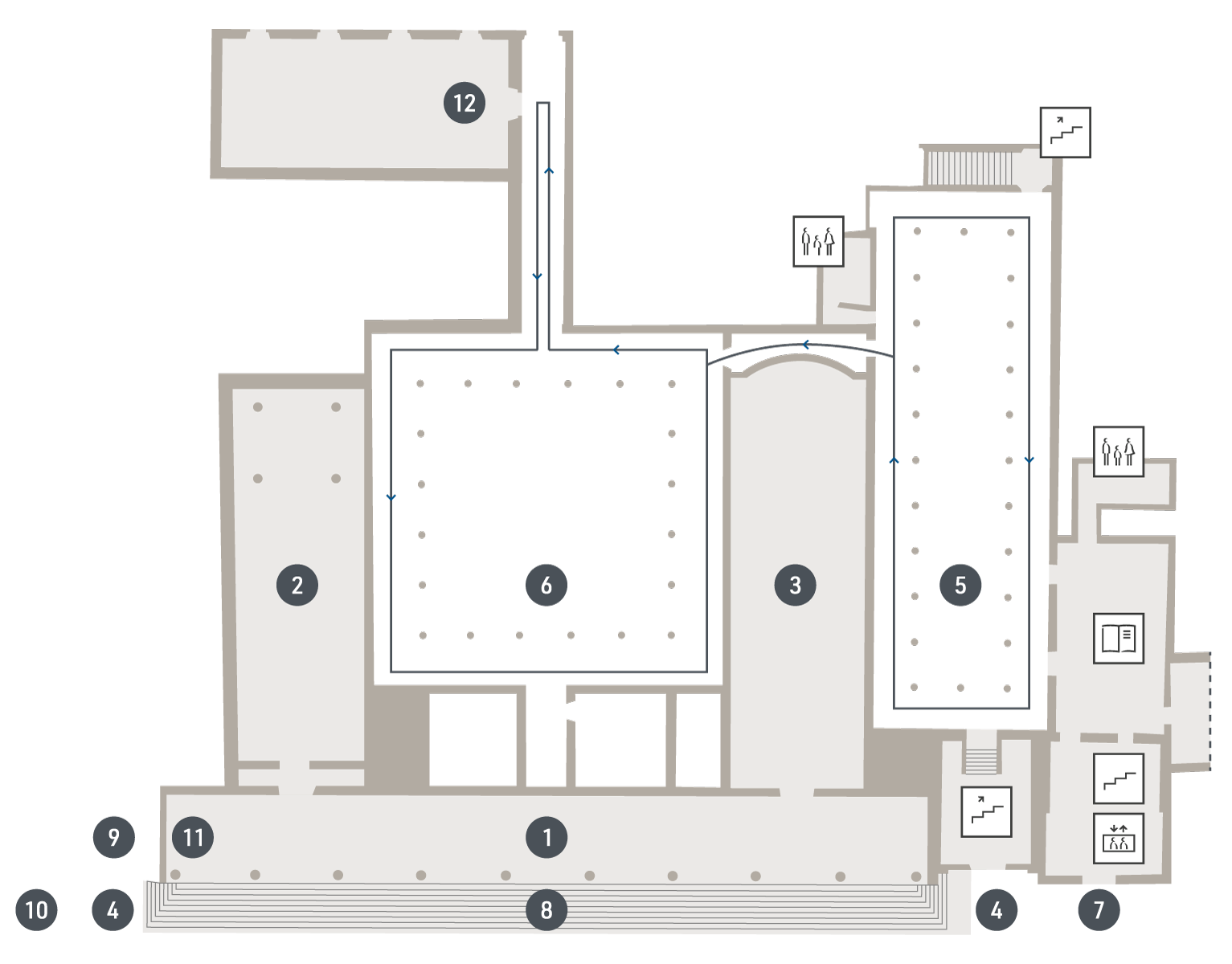
The route allows visitors to visit some of the spaces of the monumental complex, from the Loggia on the Piazza della Santissima Annunziata, where the Ferrata Window is located, to the overlook of the Historical Archives, passing through the Cortile delle Donne 5 and the Cortile degli Uomini 6.
Renowned for their beauty, these places represent the face and heart of an institution that for centuries has been inhabited by the 'Nocentine' and 'Nocentini' housed in the ancient Hospital and still continue to be traversed daily by hundreds of girls and boys who attend the services of theIstituto degli Innocenti.
Renowned for their beauty, these places represent the face and heart of an institution that for centuries has been inhabited by the 'Nocentine' and 'Nocentini' housed in the ancient Hospital and still continue to be traversed daily by hundreds of girls and boys who attend the services of theIstituto degli Innocenti.
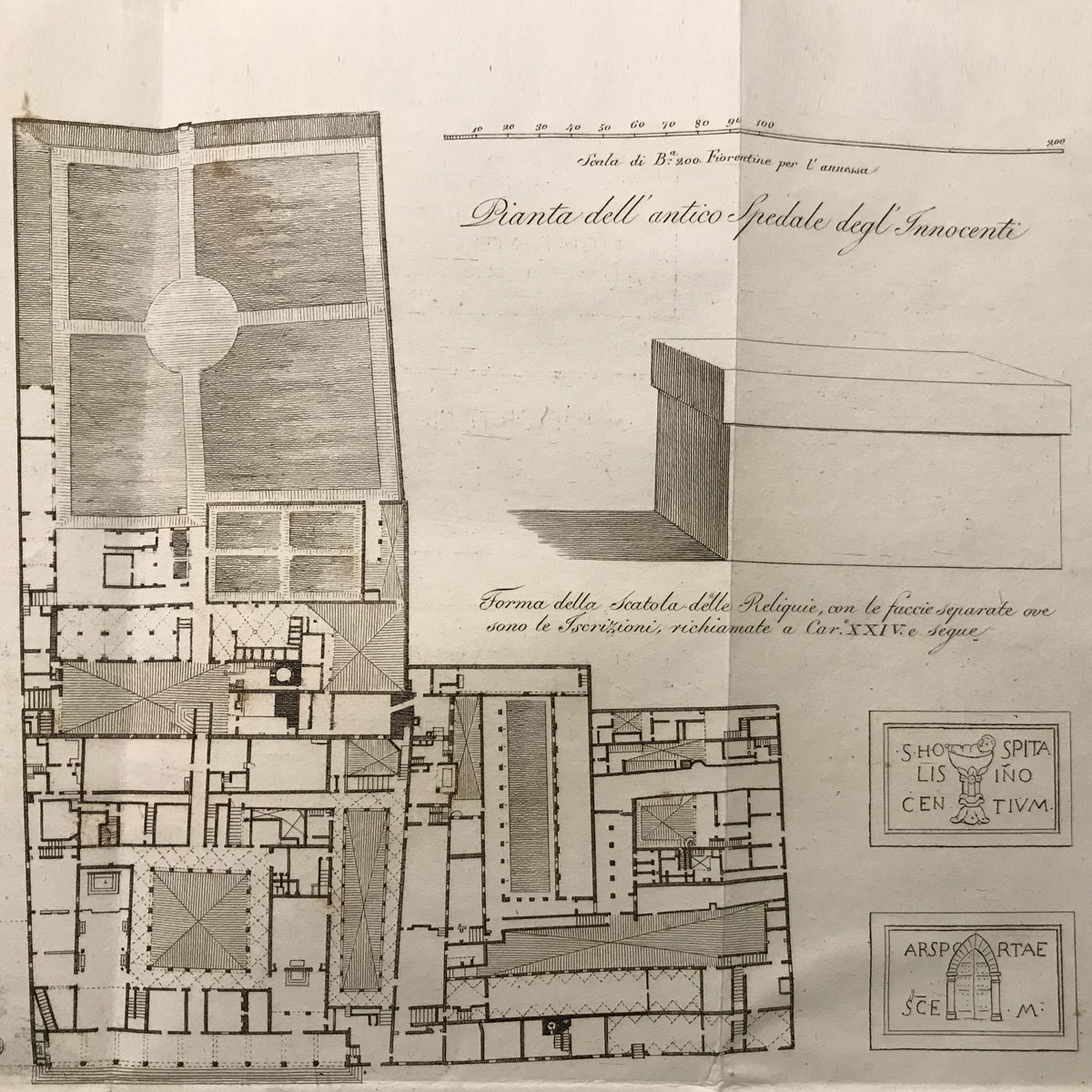
The Brunelleschian project
The former Ospedale degli Innocenti was built beginning in 1419 at the behest of the Corporazione dell'Arte della Seta (Silk Art Guild), which commissioned Filippo Brunelleschi to build it.
Engaged in that same period in the construction of the dome of Santa Maria del Fiore, Brunelleschi developed a peculiar language for the building, using materials such as pietra serena and plaster to design a space marked by columns, capitals, arches and vaults, which in the recovery of classical elements anticipates a distinctive feature of Florentine Renaissance architecture. Specially conceived for the reception and care of abandoned children, it was defined by architect Giovanni Michelucci as "a palace for children. "
Brunelleschi directed the Ospedale's construction site from 1419 to 1427, building the External Loggia 1, the Church of Santa Maria degli Innocenti 2 and the children's dormitory (today's Salone Brunelleschi) 3. He designs, finally, the Cortile degli Uomini 6.
Engaged in that same period in the construction of the dome of Santa Maria del Fiore, Brunelleschi developed a peculiar language for the building, using materials such as pietra serena and plaster to design a space marked by columns, capitals, arches and vaults, which in the recovery of classical elements anticipates a distinctive feature of Florentine Renaissance architecture. Specially conceived for the reception and care of abandoned children, it was defined by architect Giovanni Michelucci as "a palace for children. "
Brunelleschi directed the Ospedale's construction site from 1419 to 1427, building the External Loggia 1, the Church of Santa Maria degli Innocenti 2 and the children's dormitory (today's Salone Brunelleschi) 3. He designs, finally, the Cortile degli Uomini 6.
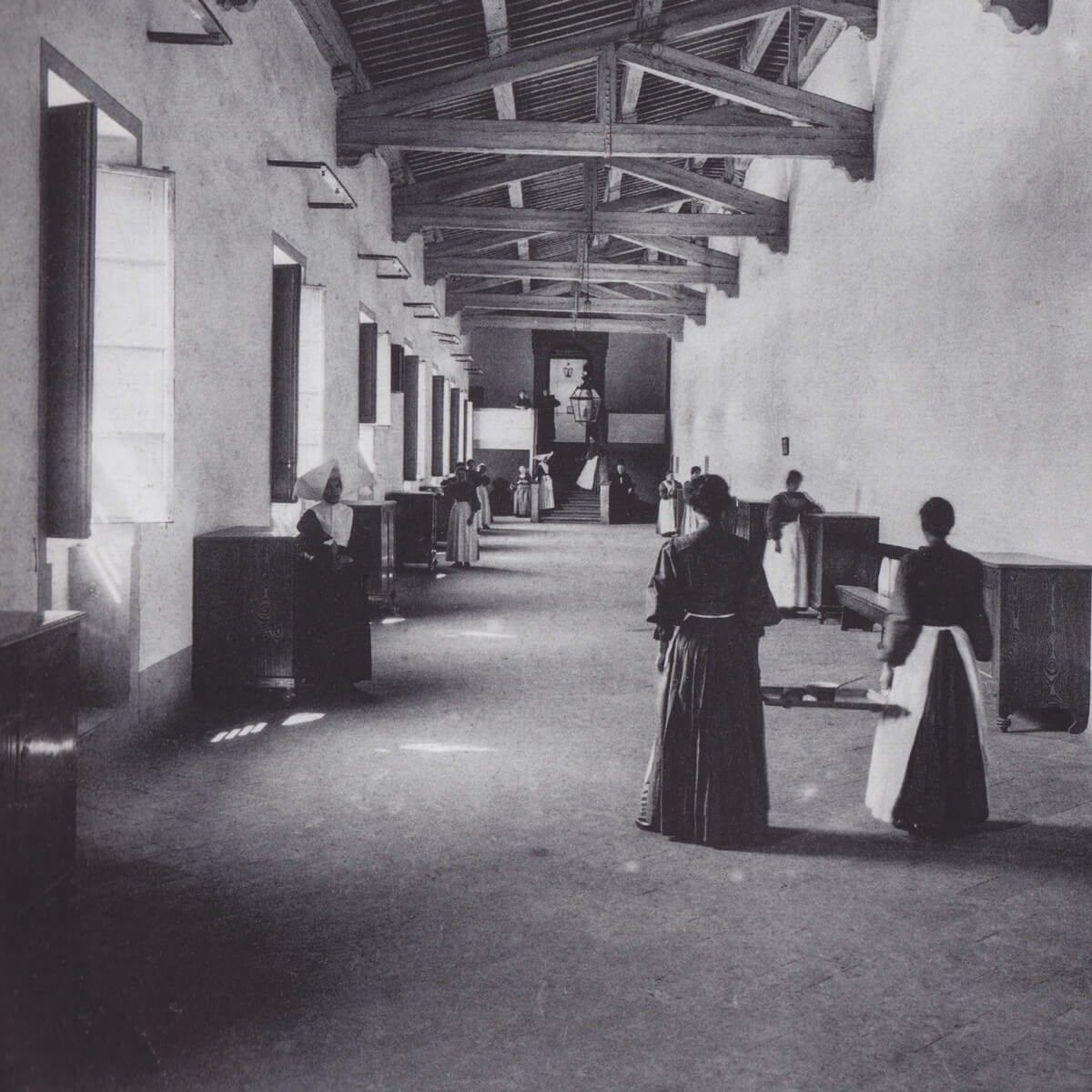
Subsequent expansions
From 1436, work on the fabbrica degli Innocenti was led by Francesco della Luna. The construction of the Cortile delle Donne 5, the Cortile degli Uomini 6, and the Covered Gallery above the outer loggia (today's Art itinerary) dates from this phase. From 1445 to 1500, numerous works were completed, including the access staircase on the square and the windowed room above the Cortile degli Uomini (now the site of the Galleria degli affreschi); the Verone loggia-stand and vaulted access on today's Via della Colonna 9 and the Church bell tower were built.
In 1487, the insertion within Brunelleschi's ten oculi of Andrea della Robbia's "earth children" sanctioned the completion of the facade, consecrating the image of the 'Putto in fasce' as the emblem of the Institution.
Later enlargements and modifications to the architecture altered the symmetry of Brunelleschi's initial layout. The following centuries are, in fact, characterized by further expansions and modifications of the building, which include the construction of the women's dormitory above the archway at 9 Via della Colonna (1620) and the internal transformation of the Church by architect Bernardo Fallani (1785).
Following the Flood of Florence, under the guidance of Monuments Superintendent Guido Morozzi, extensive architectural restoration work was initiated between 1966 and 1970, aimed at rediscovering and recovering elements of the original 15th-century building.
In more recent years, further restoration work involves the front and loggia, the monumental courtyards and other rooms.
In 2016, the new Museo degli Innocenti, designed by Ipostudio Architetti, was inaugurated.
In 1487, the insertion within Brunelleschi's ten oculi of Andrea della Robbia's "earth children" sanctioned the completion of the facade, consecrating the image of the 'Putto in fasce' as the emblem of the Institution.
Later enlargements and modifications to the architecture altered the symmetry of Brunelleschi's initial layout. The following centuries are, in fact, characterized by further expansions and modifications of the building, which include the construction of the women's dormitory above the archway at 9 Via della Colonna (1620) and the internal transformation of the Church by architect Bernardo Fallani (1785).
Following the Flood of Florence, under the guidance of Monuments Superintendent Guido Morozzi, extensive architectural restoration work was initiated between 1966 and 1970, aimed at rediscovering and recovering elements of the original 15th-century building.
In more recent years, further restoration work involves the front and loggia, the monumental courtyards and other rooms.
In 2016, the new Museo degli Innocenti, designed by Ipostudio Architetti, was inaugurated.
The Iron Window
At the north end of Outer Loggia 1, framed by the fresco depicting two Putti holding a scroll (Agnolo Gori, 1660) is the Finestra ferrata, into which-at the time of abandonment-were introduced children, also called 'exposed' or 'gettatelli'. The ringing of a bell alerted the in-house nannies of their presence, who could then provide initial care.
Commonly known as the 'wheel,' by analogy with the 'wheels of the exposed' with which the brephotrophs were generally equipped, in 1660 the Finestra was moved to this side of the loggia from its previous location near the Chiesino delle donne (toward the present Salone Brunelleschi), where the so-called 'pila' was also located: a sort of concave stone stoup on which the children left at the institution were laid.
In documentary sources, the Finestra ferrata is sometimes referred to as the 'Crib,' probably because of the presence of two polychrome terracotta statues depicting the Madonna and St. Joseph, now on display in the Museum's History Itinerary .
Together with the 'wheels' of other Italian cities, the Finestra was closed by decree on June 30, 1875, marking the end of the anonymous abandonment and the opening of the Delivery Office, which would determine new modes of reception.
Commonly known as the 'wheel,' by analogy with the 'wheels of the exposed' with which the brephotrophs were generally equipped, in 1660 the Finestra was moved to this side of the loggia from its previous location near the Chiesino delle donne (toward the present Salone Brunelleschi), where the so-called 'pila' was also located: a sort of concave stone stoup on which the children left at the institution were laid.
In documentary sources, the Finestra ferrata is sometimes referred to as the 'Crib,' probably because of the presence of two polychrome terracotta statues depicting the Madonna and St. Joseph, now on display in the Museum's History Itinerary .
Together with the 'wheels' of other Italian cities, the Finestra was closed by decree on June 30, 1875, marking the end of the anonymous abandonment and the opening of the Delivery Office, which would determine new modes of reception.
Overlooking the Historical Archives
A large glass door, created on the occasion of the Seventeenth Anniversary since the institution's founding, allows from 2019 an overlook of the Historical Archives, access to which is not allowed to the public for conservation reasons.
Gathered since the end of the 18th century inside a large hall once used as a men's refectory, the Archives preserve an extraordinary patrimony, consisting of more than 13,000 archival units and about 40,000 identification signs that belonged to the girls and boys taken in by the Hospital.
The archival records preserve the memory of the Innocenti, telling the story of the ancient Hospital and its close relationship with the city(Privilege Books; Strangers series), the lives of the many children taken in and the nannies in charge of their care(Nannies and Children series), as well as the construction of the architectural complex(Wall Books) and its administration, including artistic and building commissions.
The archival records can be consulted for study purposes or for genealogical research by contacting the Institute Archives.
Gathered since the end of the 18th century inside a large hall once used as a men's refectory, the Archives preserve an extraordinary patrimony, consisting of more than 13,000 archival units and about 40,000 identification signs that belonged to the girls and boys taken in by the Hospital.
The archival records preserve the memory of the Innocenti, telling the story of the ancient Hospital and its close relationship with the city(Privilege Books; Strangers series), the lives of the many children taken in and the nannies in charge of their care(Nannies and Children series), as well as the construction of the architectural complex(Wall Books) and its administration, including artistic and building commissions.
The archival records can be consulted for study purposes or for genealogical research by contacting the Institute Archives.
Some works in detail
The itinerary is marked by the presence of numerous works of art created in dialogue with the architecture
of the monumental complex, capable of telling the story of the institution and its mission of welcoming and
care aimed at abandoned children.
of the monumental complex, capable of telling the story of the institution and its mission of welcoming and
care aimed at abandoned children.
Andrea della Robbia
Putti in fasce, 1487
Glazed earthenware; diameter about 100 cm each
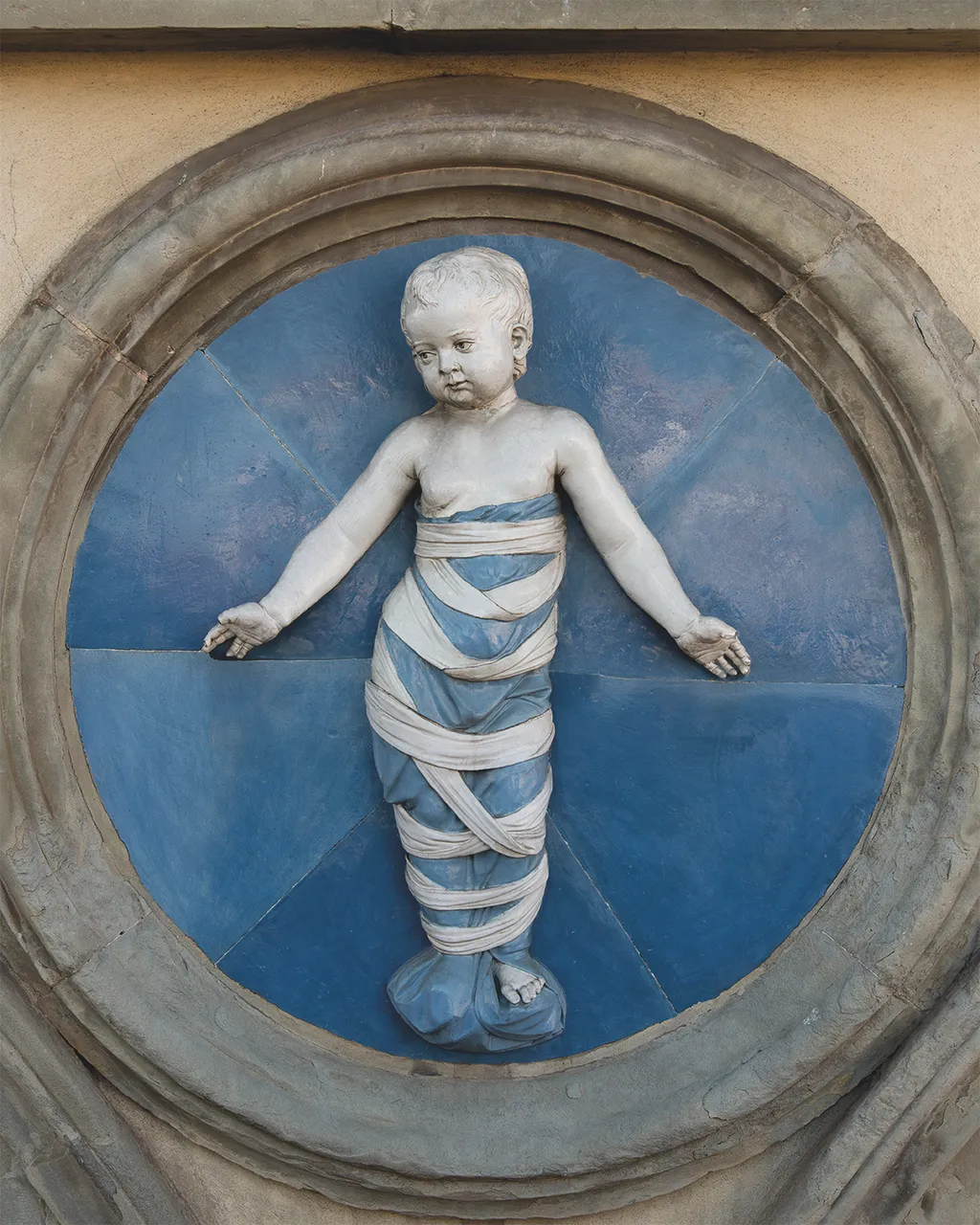
The pietra serena oculi between the arches of Brunelleschi's Loggiato on the façade have housed since 1487 the
ten Putti in fasce by Andrea della Robbia (a), made using the glazed terracotta technique. Commissioned by the Spedalingo Francesco Tesori, the girls and boys depicted in the medallions, on backgrounds of a characteristic cobalt blue color, represent the institution and its work toward childhood and are among the highest artistic expressions of Florentine Humanism.
On the extensions at the ends of the facade are since the nineteenth century four more Putti, made on the Robbia example by the Ginori manufactory. After restoration conducted between 2015 and 2016 by the Opificio delle Pietre Dure, two fifteenth-century Putti were moved inside the Museum for conservation needs.
ten Putti in fasce by Andrea della Robbia (a), made using the glazed terracotta technique. Commissioned by the Spedalingo Francesco Tesori, the girls and boys depicted in the medallions, on backgrounds of a characteristic cobalt blue color, represent the institution and its work toward childhood and are among the highest artistic expressions of Florentine Humanism.
On the extensions at the ends of the facade are since the nineteenth century four more Putti, made on the Robbia example by the Ginori manufactory. After restoration conducted between 2015 and 2016 by the Opificio delle Pietre Dure, two fifteenth-century Putti were moved inside the Museum for conservation needs.
Bernardino Poccetti Apotheosis of Cosimo I: four episodes from the life; Allegories, by 1612
Fresco; 530 x 530 cm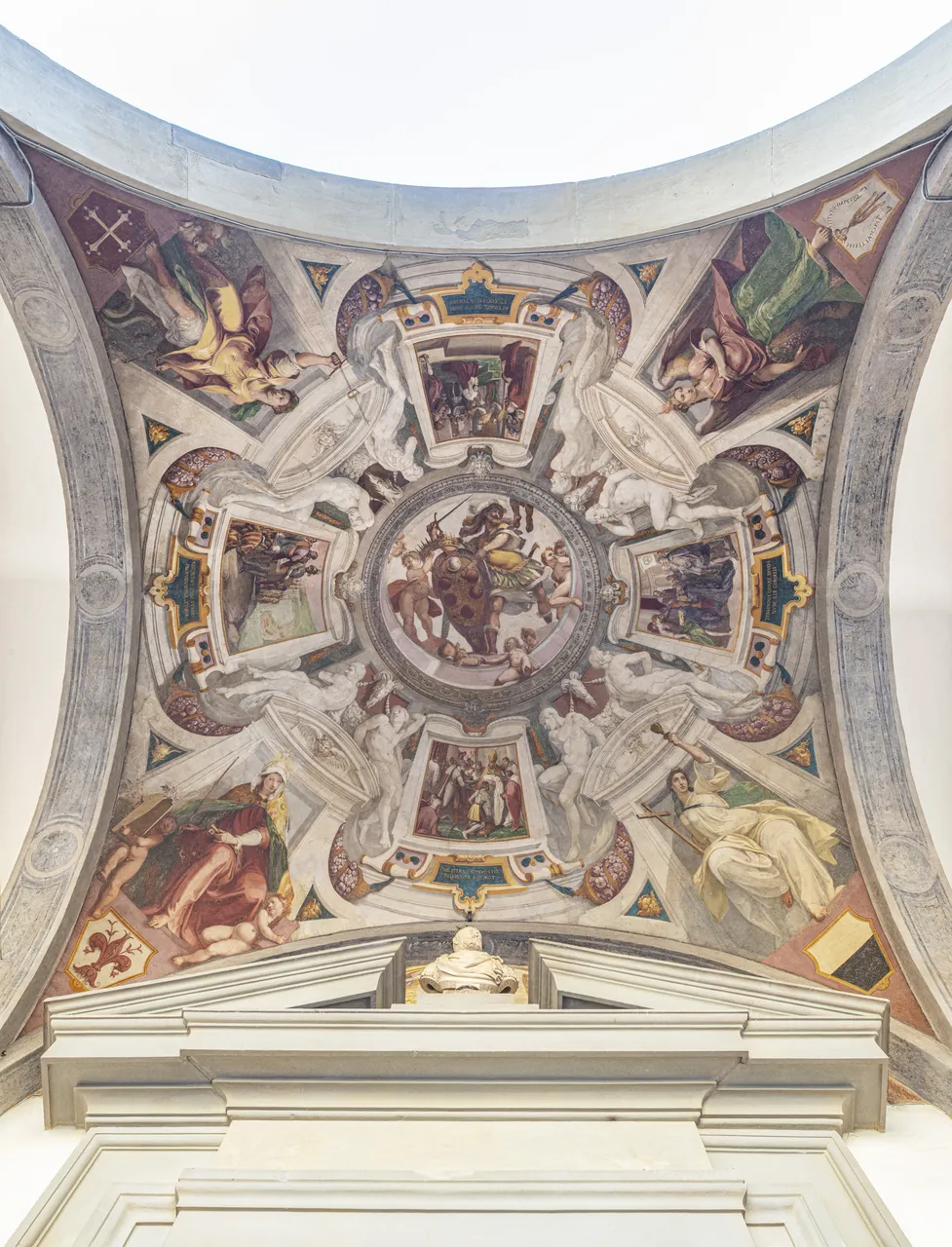
Also in the Loggiato, corresponding to the marble busts of Cosimo I, Francesco I and Ferdinando I de' Medici (1605) by sculptor Giovan Battista Sermei, are the frescoes of a decorative cycle painted by Bernardino Poccetti during the years he was a guest of the Hospital (1610-1612).
Each scene celebrates the Medici grand dukes through allegories and re-enactments of biographical events, which also refer to the Innocenti and its relationship with the city, as does the episode on the building's entrance vault, with the Apotheosis of Cosimo I (b) in the center, in which Prior Vincenzo Borghini appears.
Inside the monumental complex are two other important frescoes by Poccetti depicting the History of the Innocents (1610) and the Dispute of Saint Catherine of Alexandria with the Philosophers (1612).
Each scene celebrates the Medici grand dukes through allegories and re-enactments of biographical events, which also refer to the Innocenti and its relationship with the city, as does the episode on the building's entrance vault, with the Apotheosis of Cosimo I (b) in the center, in which Prior Vincenzo Borghini appears.
Inside the monumental complex are two other important frescoes by Poccetti depicting the History of the Innocents (1610) and the Dispute of Saint Catherine of Alexandria with the Philosophers (1612).
Andrea Della Robbia Annunciation, c. 1490
Glazed terracotta, 145 x 290 cm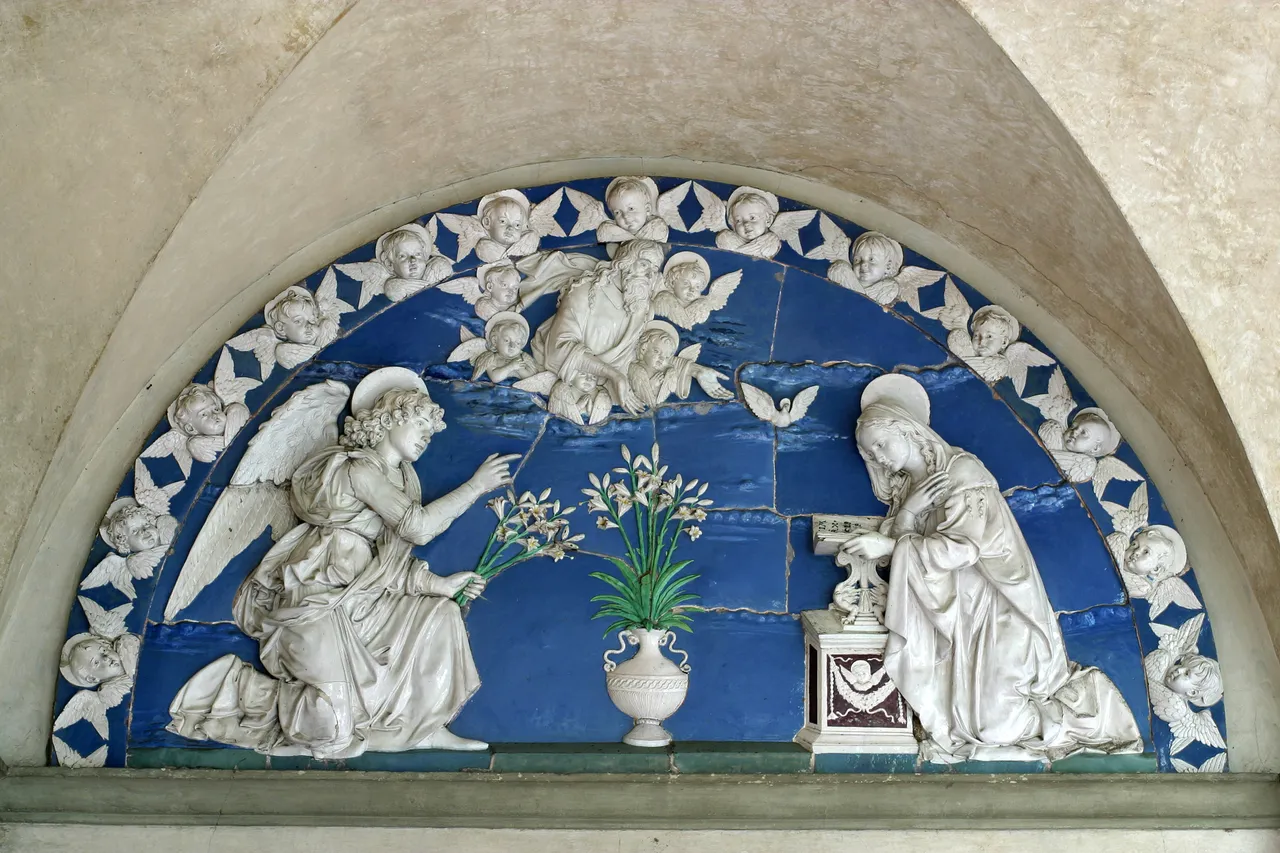
In the Cortile degli Uomini), above the interior entrance door to the Church of Santa Maria degli Innocenti, is a glazed terracotta lunette with the Annunciation by Andrea della Robbia (c) dating from around 1490. The work was transferred outdoors in the second half of the eighteenth century, probably from the altar of the Pugliese Chapel, where it surmounted the coeval altarpiece by Piero di Cosimo (now displayed in the Art itinerary), thus enhancing its sculptural rendering.
